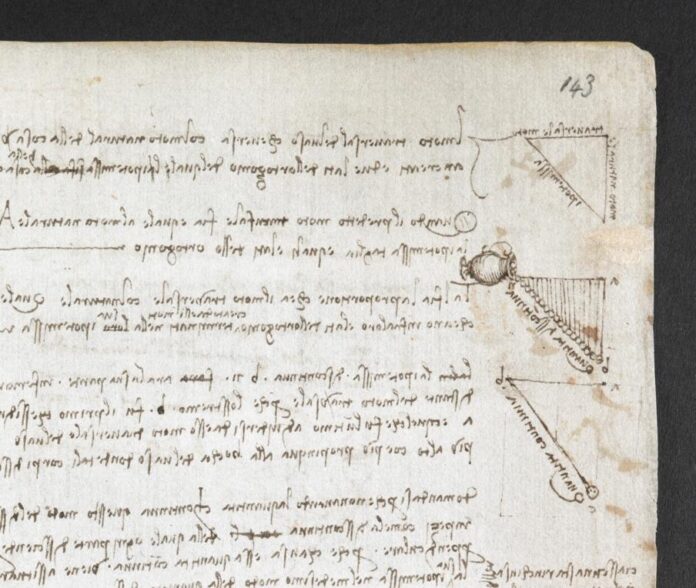Physicists studying Leonardo da Vinci’s Codex Arundel have made the remarkable discovery that the Italian Renaissance man may have beaten Galileo and Isaac Newton to theorizing gravity.
Leonardo’s groundbreaking scientific investigations have continued to amaze modern-day researchers as new findings come to light. The latest discovery, published in the journal , is a new triangular shaped doodle by the Italian polymath, that has been shown to be an early mathematical study that deconstructs gravitational movement by accounting not only for its evident downward pull but also for the way the force steadily accelerates over time.
Made some 500 years ago, these insights were startlingly ahead of their time, pre-empting the work of both Galileo and Isaac Newton in the 16th and 17th centuries respectively.

Pages from Leonardo da Vinci’s Codex Arundel. Courtesy the British Library.
The drawing initially caught the eye of Dr. Morteza Gharib, a professor in aeronautics at California Institute of Technology, who spotted it tucked in the margins of a surviving notebook by da Vinci known as The Codex Arundel.
The sketch shows a water pitcher with its contents pouring out as large circular droplets. Their outwards and downwards trajectory of these contents are shown along the the hypotenuse of an adjoining triangle.
Broken into sections by vertical lines along the triangle, the gravitational force is deconstructed and shown to slowly accelerate, as the water’s contents fall faster with time.
This discovery has hidden in plain sight for centuries as the manuscript had predominantly been studied by art historians rather than scientists. Now, Gharib has even found that with this drawing da Vinci managed to estimate what is known to physicists as the “gravitational constant” within ten percent of its actual value, despite only conducting what appears to have been a crude experiment.
“It’s mind boggling,” Gharib told the . “That’s the beauty of what Leonardo does.”
Later scientists like Galileo and Newton have since been able to formalize this understanding of gravity because they worked at a time when mathematics and time measurement techniques were much more advanced.

























